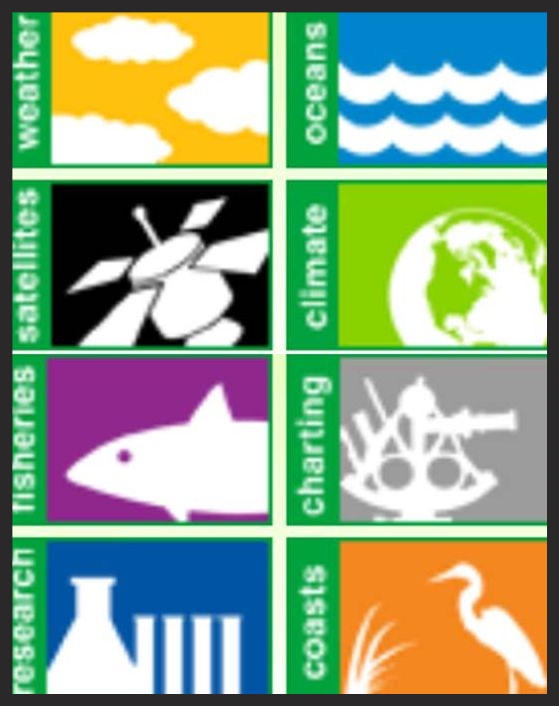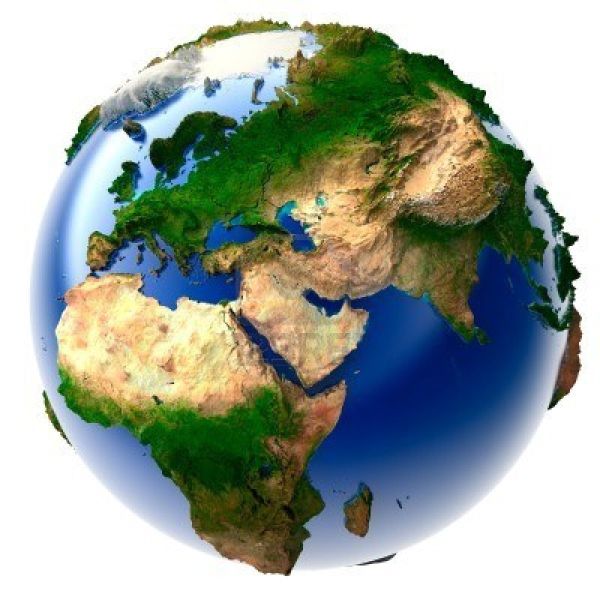State Success Story
The Oregon Coastal Program helps communities understand their tsunami risks and implement policies that will protect property and save lives.
Cognizant of this increasing threat, the Oregon Coastal Management Program (OCMP) began working with coastal communities to reduce their risk of property damage and loss of life from a tsunami. OCMP engages with local government partners all along the Oregon coast, working together to educate both residents and visitors about coastal hazards. Their outreach efforts have not only raised awareness about tsunamis, but also generated local momentum for actions to increase resilience.
To learn more, please
click here.
|

At the Agencies
BOEM announces the bureau will offer more than 48 million acres
offshore Louisiana, Mississippi, and Alabama for oil and gas exploration and development, in a lease sale that will include all available unleased areas in the Central Planning Area (CPA).
Read more
NOAA releases draft plans for proposed marine sanctuaries in Wisconsin and Maryland. New areas would protect shipwrecks from 1800s, World War I and maritime battlegrounds. The public will be able to weigh in beginning Monday, January 9, on two proposals for new NOAA national marine sanctuaries in Wisconsin and Maryland that would protect nationally significant shipwrecks.
Read more
The U.S. Fish and Wildlife Service (Service) expects that approximately $17 million
will be available for grants from the NCWCG Program in FY 2017. Awards typically
range from $125,000 (there is no specific minimum) to a maximum of $1,000,000.
For more details, please click here.
EPA, in collaboration with The Association of Clean Water Administrators (ACWA), The Association of State Drinking Water Administrators (ASDWA), and The Association of State Wetland Managers (ASWM), recently updated a webpage showcasing innovative practices that state water agencies are currently performing to reduce their vulnerability and build resilience to climate change. The webpage was recently supplemented with new descriptions of select climate adaptation related practices in diverse programmatic areas and geographic locations across the country. The information presented on these state practices can be a useful resource for other state agencies, as well as local and tribal governments, seeking to engage in climate adaptation efforts within their own water programs.
Read more
NOAA Fisheries is pleased to announce $8 million in recommended funding for 11 shovel-ready coastal resiliency projects in various sites across the country. "Americans who live on the coast face enormous risks when Mother Nature strikes; however, it is natural infrastructure--wetlands, marshes, floodplains, and coral reefs--that often serve as our best defense. The selected projects will restore our natural barriers and help keep people, communities, and businesses safe," said Eileen Sobeck, assistant NOAA administrator for Fisheries.
Read more
|

In the News
Inside the US military's fight against sea level rise - Joint Base Langley-Eustis in Hampton, Va., is surrounded by water. It's Lt. Col. Kevin Osborne's job to make sure the base doesn't drown. And as the commander of the 633rd Civil Engineer Squadron, located at the longest continually running Air Force base in America, Osborne's got a lot to protect. Namely, a fleet of powerful F-22 Raptors, advanced fighter jets valued at about $340 million each. During a tour of the base in November, Osborne told Circa about the consequences of uncontrolled flooding situations - situations that are projected to become more frequent as human-caused climate change worsens.
New climate model projections of the world's coral reefs reveal which reefs will be hit first by annual coral bleaching, an event that poses the gravest threat to one of the Earth's most important ecosystems.
Read more
As temperatures warm in the Arctic, costal tundra is thawing, crumbling and falling into the ocean. It's a phenomenon researchers in Germany suggest deserves greater scientific attention. In a new report published in the journal Nature Climate Change, scientists with the Alfred Wegener Institute call on the polar research community to undertake a systematic investigation of the effects of coastal erosion on biological systems in the shallows of the Arctic.
Read more
|

In the States and Regions
East Coast
A potential solution to a troublesome sand shortage off Southeast Florida is tucked away in a massive water resources funding bill President Barack Obama signed into law last month.
The 2016 Water Resources Development Act authorizes the Army Corps of Engineers to study the potential of using foreign sand, such as from the Bahamas, to widen shorelines and protect coasts from hurricanes like the ones that lashed the Big Bend and northeastern Florida last summer.
Read more
The Maryland Department of Natural Resources invites local governments and nonprofit organizations to apply for funding to help restore the Chesapeake Bay and improve water quality. The department is seeking to fund community projects aimed at mitigating and reducing nonpoint source pollution caused by excess nutrients and sediment through the Chesapeake and Atlantic Coastal Bays Trust Fund. The department plans to allocate and award about $25 million in 2018.
Gulf Coast
For 10 years, Louisiana's Coastal Master Plan has represented the state's vision for preventing its bottom third from being consumed by the Gulf of Mexico.
That vision got a lot grimmer today with the release of the 2017 edition of the plan.
It predicts that even if everything works as planned, 2,800 square miles of coast still could be lost in the next four decades, and about 27,000 buildings may need to be floodproofed, elevated or bought out, including about 10,000 in communities around New Orleans. That's under the plan's new worst-case scenario for sea level rise and subsidence.
Read more
East bank residents of the River Parishes are a step closer to getting a new federal levee protecting them against floodwaters from Lake Pontchartrain - a project more than 40 years in the making that took on new urgency after the inundations brought by Hurricane Isaac in 2012. President Barack Obama recently signed into law a comprehensive federal water resources bill that included authorization for an 18-mile stretch of levees protecting the towns of Montz, LaPlace, Reserve and Garyville. It would run roughly parallel to Interstate 10 from the Bonnet Carre Spillway in St. Charles Parish to the Hope Canal in St. John the Baptist Parish.
Read more
West Coast and Pacific Islands
The Energy Department announced the award of up to $40 million, subject to appropriations, to design, permit, and construct an open-water, grid-connected national wave energy testing facility. The facility will be constructed in Newport, Oregon, by the Northwest National Marine Renewable Energy Center at Oregon State University and will support innovations in wave energy technologies capable of harnessing the significant wave energy resources along United States coastlines.
The California Department of Fish and Wildlife (CDFW) announced that it is awarding $40 million in Proposition 1 funds for water quality, river and watershed protection, and restoration projects for vital waterways throughout California. In the second of ten planned annual grant cycles, CDFW has selected 44 projects to receive funding from its Water Quality, Supply and Infrastructure Improvement Act of 2014 (Prop 1) Restoration Grant Programs.
Read more
Great Lakes
The United States Environmental Protection Agency, (EPA) and the Wisconsin Department of Natural Resources (DNR) have given final approval to the use of wet dredging to remove contaminated lake sediments at the Ashland Lakefront Superfund Site. The decision, announced Monday (Dec. 21) by Northern States Power, an Xcel Energy Company, said the EPA and the DNR had reached the decision last week.
Read more
The Michigan Department of Environmental Quality and Great Lakes Commission recently announced the availability of $25,000 for small grants to support local efforts to clean up Michigan rivers, streams and creeks. Michigan's Volunteer River, Stream and Creek Cleanup Program supports grants to local government to help clean Michigan waterways. Local units of organizations may partner with nonprofits or other volunteer groups to carry out the work. A 25 percent minimum local match is required.
Read more
|
|
Announcements & More
OneNOAA Science Seminars, 2016
Title: Protecting our Marine Treasures, Sustainable Finance Options for U.S. Marine Protection Areas
Date & Time: Thu, February 9, 2017, 1pm - 2pm
Title: Following my Dreams
Date & Time: Thu, February 23, 2017, 11:30am - 1:00pm
Seminars are open to the public. For remote access, location, abstracts and more, visit the OneNOAA Science Seminar Calendar at:
http://www.nodc.noaa.gov/seminars/
Seminars are posted in Eastern Time and subject to changes without notice; please check the web page for the latest seminar updates.
Events & Webinars
January 25 - 26, 2017
February 6 - 9, 2017 - Early registration ended on November 23
March 14 - 16, 2017
March 20 - 23, 2017
May 9 - 11, 2017
May 31- June 2, 2017
|
|